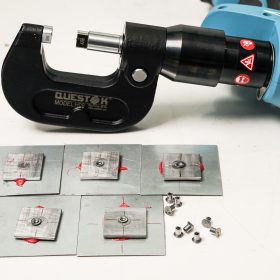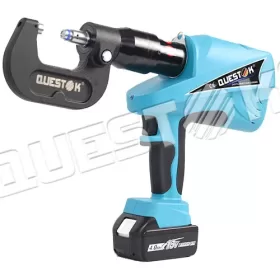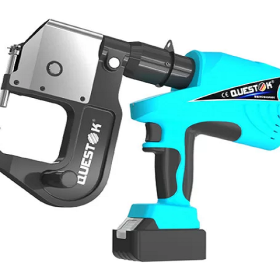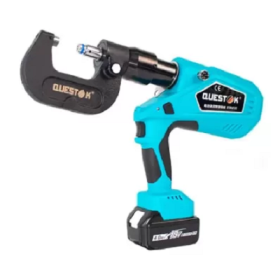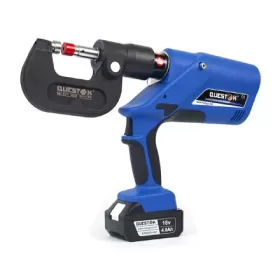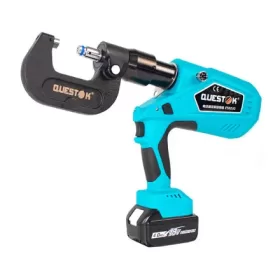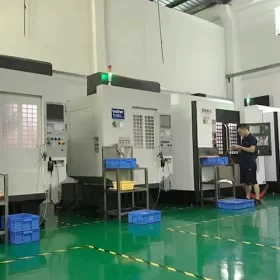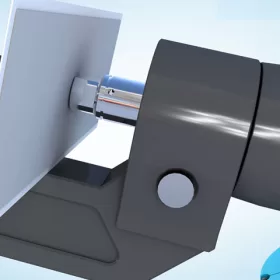Choosing the Right Rivets for Your Self-Piercing Gun Riveter
Self-piercing gun riveters are indispensable tools for various industrial and construction applications. They provide a fast and efficient way to create strong, permanent joints without the need for pre-drilled holes. However, choosing the right rivets for your self-piercing gun riveter is crucial for optimal performance and safety. This article will guide you through the essential considerations to ensure you select the ideal rivets for your specific needs.
Types of Rivets
There are several types of rivets available, each with its unique properties and applications. The most common types used with self-piercing gun riveters include:
Solid Rivets: Made from a single piece of material, solid rivets provide high shear and tensile strength. They are ideal for applications where strength is paramount, such as structural framing and heavy machinery.
Semi-Tubular Rivets: These rivets have a hollow shank and are installed with a mandrel that expands inside the shank. They offer a balance between strength and flexibility, making them suitable for general-purpose applications.
Blind Rivets: Designed for use in situations where access to both sides of the joint is limited, blind rivets expand inside a sleeve to create a strong, secure connection.
Material and Coating
The material and coating of the rivets also play a significant role in their performance and durability. Here are some key factors to consider:
Material: Steel, aluminum, and stainless steel are the most common materials used for rivets. Steel rivets provide high strength, while aluminum rivets are lighter and more resistant to corrosion. Stainless steel rivets offer excellent corrosion resistance and are suitable for use in harsh environments.
Coating: Zinc, cadmium, and epoxy coatings are applied to rivets to enhance their corrosion resistance. Zinc coating is the most common and provides good protection against rust. Cadmium coating offers better corrosion resistance than zinc but is not environmentally friendly. Epoxy coating provides excellent resistance to chemicals and abrasives.
Grip Range and Diameter
The grip range and diameter of the rivets are crucial to ensure they fit properly in the self-piercing gun riveter and the materials being joined.
Grip Range: The grip range refers to the thickness of the materials being joined. The rivet must have a grip range that is at least equal to the thickness of the materials.
Diameter: The diameter of the rivet determines its strength and the size of the hole that needs to be pierced. Larger diameter rivets provide higher strength but may not be suitable for thinner materials.
Head Type
The head type of the rivet affects its appearance and functionality. The most common types are:
Flat Head: Provides a flush surface and is ideal for applications where a clean appearance is desired.
Round Head: Has a dome-shaped head that helps distribute the load and is commonly used in industrial applications.
Countersunk Head: Designed to be countersunk into the material for a low-profile appearance. It is suitable for applications where space is limited or a smooth surface is required.
Conclusion
Choosing the right rivets for your self-piercing gun riveter is essential for ensuring a successful and safe riveting process. By considering the factors outlined above, you can select the rivets that are best suited for your application and materials. Remember to consult the manufacturer’s guidelines for specific recommendations and safety precautions. With the proper rivets, you can achieve strong, durable joints that meet your project requirements.
- Company News
- Industry News
- Tag
- Tags
-
The Advantages of Questok Rivet Guns: Precision, Efficiency, and Durability
In industrial fastening applications, the choice of tools directly impacts productivity, safety, and long-term cost-effectiveness. Questok rivet guns have emerged as a standout solution for professionals across aerospace, automotive, and construction sectors. Combining advanced engineering with user-centric design, these tools deliver unmatched performance. Below are the key advantages that make Questok rivet guns a preferred choice:
-
Rivet Gun FAQ
Rivet Gun FAQ-SPR
-
Fast Assembly and Repair With Cordless Solid Rivet Gun
Questok cordless solid rivet gun stands out as a pivotal innovation, merging portability with power to facilitate efficient and effective fastening in a myriad of applications.
-
Redifine The Role of Self-piercing Riveting Gun Machine
Self-piercing riveting adopts high-speed mechanical fastening skill that joins thin sheet materials, typically steel and aluminum alloys.
-
The Latest Innovations in Clinching Tool Design
Explore the latest innovations in clinching tool design, redefining precision, efficiency, and versatility in material joining.
-
The Application and Maintenance of Self-Piercing Rivet Guns
Delve into the applications of self-piercing rivet guns in the automotive and aerospace industries and reveal the essential maintenance practices that ensure their accuracy and efficiency.
-
Rivetless Riveting Gun for Ventilation Duct Projects
The ventilation duct rivetless gun is a tool for riveting ventilation ducts without rivets.
-
Guide to Using Self-Piercing SPR Riveting Gun
In the automotive industry, self-piercing SPR (Self-Piercing Rivet) riveting guns are commonly used for joining metal components in vehicle bodies, including BMW vehicles.
-
Rivet Gun FAQ
Rivet Gun FAQ-SPR
-
Versatile Fastening- Applications of the Handheld Rivet Gun Across Industries
In the realm of fastening, the handheld rivet gun stands as a testament to ingenuity and versatility. Its ability to effortlessly join materials with sheer strength and permanence has revolutionized manufacturing and construction processes, leaving an enduring mark on diverse industries. Aerospace: Where precision and reliability are paramount, the rivet gun shines. In aircraft assembly, […]
-
Time-Saving Tools- Speeding Up Projects with Electric Blind Rivet Guns
In the whirlwind of project deadlines, every minute counts. But what if there was a tool that could dramatically reduce assembly time, giving you an edge in the race against the clock? Enter the electric blind rivet gun: your secret weapon for lightning-fast and effortless riveting. Electric blind rivet guns are the ultimate time-savers for […]
-
Streamlining Fastening- How an Electric Blind Rivet Gun Enhances Efficiency
Introduction In the realm of manufacturing and assembly, fastening plays a crucial role in securing components and ensuring structural integrity. Traditional manual rivet guns, while reliable, are often time-consuming and labor-intensive. The advent of electric blind rivet guns has revolutionized the fastening process, significantly enhancing efficiency and productivity. This article delves into the benefits of […]
-
Top Trends in Electric Rivetless Clinching Guns
In the realm of fastening technology, electric rivetless clinching guns have emerged as a revolutionary solution for a wide range of industrial applications. These advanced tools offer several преимущества and capabilities, revolutionizing the way businesses approach their fastening needs. Adoption of Brushless Motors Brushless motors have gained significant traction in electric rivetless clinching guns due […]
-
Top Features and Benefits of Universal Self-Piercing Riveting Guns
In the realm of metalworking, precision and efficiency are paramount. Universal self-piercing riveting guns, often referred to as self-pierce riveting guns, embody these qualities, offering remarkable benefits for various applications. These innovative tools feature technologically advanced functions that enhance productivity, reliability, and overall performance, making them indispensable in industries such as aerospace, automotive, construction, and […]
-
The Role of Automation in Electric Rivetless Clinching
Electric rivetless clinching (ERC) is a lightweight joining process that eliminates the need for rivets or other fasteners. This can lead to significant cost savings and increased production efficiency. Automation plays a critical role in ERC, enabling high-speed and high-volume production. Automated Feed Systems Automated feed systems are used to accurately position the two workpieces […]
-
Why Choose a Universal Self-Piercing Riveting Gun for Your Projects?
In the realm of construction and fabrication, riveting guns stand as indispensable tools for creating secure and robust connections. Among the various types available, universal self-piercing riveting (SPR) guns have emerged as a game-changer due to their versatility and efficiency. This article will delve into the compelling reasons why choosing a universal self-piercing riveting gun […]
